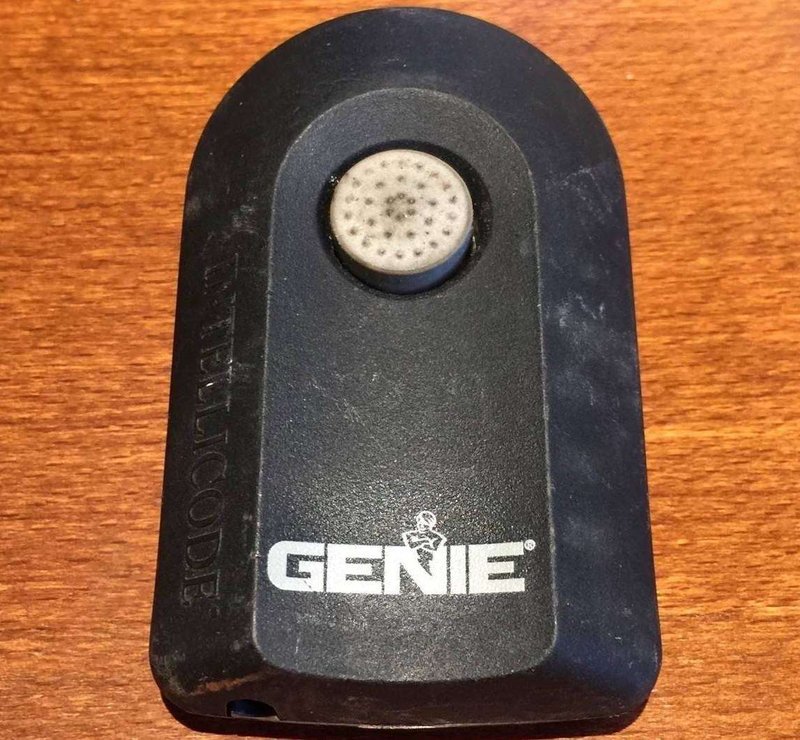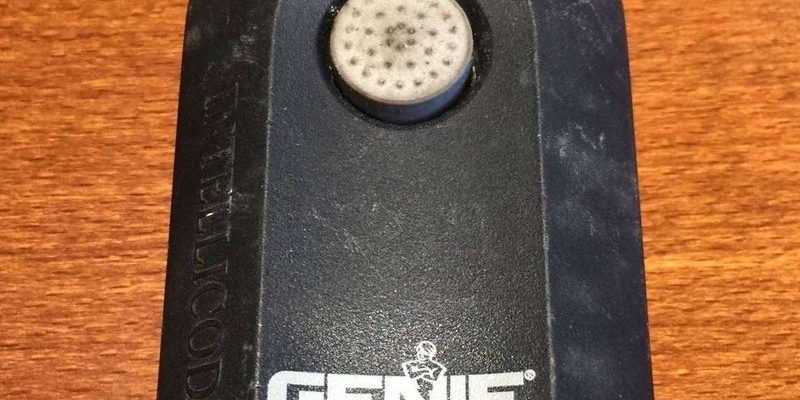
Genie is a popular garage remote brand, sitting in garages all over the country. These small devices do a big job: they signal your garage door opener to swing the heavy door open or closed. But like any gadget with code, batteries, and moving parts, Genie remotes can get fussy. From lost signal to stubborn syncing, your remote might need a little TLC to get back in line. Let’s untangle some of the most common headaches, step-by-step.
Check the Remote Batteries First
Here’s the thing: batteries are the lifeblood of any Genie garage remote. If your remote suddenly stops working, don’t assume the worst. Nine times out of ten, a dead or dying battery is the culprit. It’s easy to overlook, but power drains faster than you’d think—especially in cold weather or if you use the remote a lot.
Pop open the battery compartment (usually a small screw or slide cover on the back). Take a quick look for any corrosion, rust, or strange white powder on the terminals—that’s a sure sign things aren’t connecting properly. Swap out the old ones for a fresh pair (Genie remotes typically use coin-cell batteries like CR2032). Just make sure the batteries sit snugly in their slot, with the positive and negative sides matched up—otherwise, the code might not send, and nothing will happen.
If you’ve replaced the batteries and the remote is still stubbornly silent, test the buttons. Sometimes, the internal pad wears out, making contact spotty. Gently press each button and listen for a click or feel a slight give. No luck? Time to look deeper.
Test the Remote’s Range and Signal
Imagine standing just outside your garage, furiously pressing the remote, and nothing moves. Annoying, right? Genie garage remotes have a set range—usually about 50 to 100 feet. Anything outside that window and you’re basically yelling into the void.
First, walk closer to the door and try again. If the remote only works right up close, something might be blocking the signal. Think metal shelves, dense walls, or even a bunch of boxes piled between you and the receiver (that’s the little antenna wire on your garage opener). Sometimes, even a neighbor’s wireless device can cause interference.
Tip: Hold the remote at a different angle or height, away from your body—which can actually absorb the signal.
If moving around helps, you’ve probably got a signal issue, not a broken remote. But if you’re standing right next to the opener and there’s still no response, the problem might be somewhere else—like the opener itself or the way your remote and opener are synced.
Re-Sync or Reprogram the Genie Remote
Remotes and openers talk to each other using a code—a unique handshake that keeps your garage secure. If that handshake breaks (say, after a power outage or accidental reset), the Genie remote can lose its pairing. You might be wondering, “How do I get them chatting again?”
Look for the “Learn” or “Program” button on your garage opener. It’s usually a small, colored button near where the antenna wire hangs down. Here’s the basic pairing process:
- Press and hold the “Learn” button until you see a blinking LED light.
- Within 30 seconds, press the button on your Genie remote that you want to use for the door.
- Watch for a flashing or steady light—this lets you know the code has synced and the devices are paired.
Let me explain: if you miss the 30-second window, the opener drops out of programming mode and you’ll need to start over. Don’t worry—it’s normal to fumble the timing once or twice.
Insight: Every model has its own quirks, so if you’re stuck, the manual is your best friend (or hunt down a PDF for your exact Genie model).
Resetting Your Genie Garage Remote
Sometimes, your Genie remote just needs a fresh start. Maybe you changed batteries, tried to sync it a few times, or there was a recent power outage—the remote might be stuck in limbo. Resetting is like hitting the “refresh” button on your browser when a page freezes.
To fully reset most Genie remotes:
- Remove the batteries and wait 60 seconds for any remaining charge to drain.
- Reinsert fresh batteries and make sure the contacts are clean.
- Clear stored codes by holding down the remote’s main button for about 10 seconds (if your model supports this feature).
- Repeat the sync steps with the “Learn” button on your opener.
You might be skeptical—why does removing the battery help? Just like with any electronic device, sometimes a full power cycle gets things back to normal. If your remote still won’t cooperate after this, the issue might be with the opener or the circuit board inside the remote itself.
Inspect the Garage Door Opener Receiver
If your Genie remote checks out but the garage door won’t budge, it’s worth inspecting the opener—the big box mounted to the ceiling. This is where all the magic happens. Think of the opener as the “ear” waiting for your remote’s “voice.” If it can’t hear, nothing’s getting through.
First, confirm the opener has power. Is the LED light on the unit glowing? If not, it might be a tripped breaker, a loose plug, or a blown fuse. Next, look for the antenna wire hanging down from the opener. Make sure it’s straight, not broken or twisted, and definitely not tucked up inside the unit. That wire is crucial for picking up the remote’s signal.
If there’s a “lock” button on your wall console, double-check it isn’t turned on. When the lock feature is active, the Genie opener ignores all remote signals as a security measure. Trust me, this is a classic “facepalm” moment—a simple button push causes a lot of head scratching before someone spots it.
Compare Genie Remotes To Universal Remotes
Let’s talk options. If your Genie remote keeps letting you down, you might wonder—should you try a universal garage door remote instead? There are pros and cons.
Universal remotes are meant to work with a variety of brands, including Genie, by supporting different codes. They’re great if you’ve lost the original or want a backup. The downside? Some models are tricky to sync, and features like multi-door control can be hit or miss.
Genie-branded remotes are purpose-built: they sync quickly, use the right frequency, and usually offer smoother programming. Plus, most Genie remotes have a more straightforward setup process with unique rolling codes for extra security.
Takeaway: If your opener is a Genie, sticking with a Genie remote will usually save time and headaches—but universal remotes are a good backup for households juggling multiple brands.
Diagnose Button Or Circuit Board Problems
Sometimes, even after checking batteries and resyncing, the remote’s buttons just don’t respond. This can point to worn-out contacts or a problem inside the circuit board.
Try this: press each button firmly and watch for a tiny LED light (if your remote has one). No light? Either the button is shot or something’s up with the electronics inside. If you’re comfortable, crack open the casing and look for any visible damage—loose solder, corrosion, or cracked parts are all red flags.
Honestly, small electronics can wear out after years of bumps, drops, or moisture exposure (especially if your remote lives in your car). If you see gunk or sticky residue, carefully clean the contacts with a soft cloth and a dab of rubbing alcohol. Clean connections can sometimes bring a remote back to life—just take your time and avoid using too much liquid.
If nothing changes, replacement might be the simplest solution. Circuit board repairs are best left to the pros unless you’re handy with a soldering iron.
Program New Codes For Added Security
Security matters more than most people realize. Genie remotes use rolling codes—meaning, every time you press the button, the code changes. This helps prevent someone from copying your remote’s signal to break into your garage. But if you move into a new place or lose your remote, it’s smart to erase old codes and program new ones as soon as possible.
To clear all stored codes from your Genie opener:
- Hold down the “Learn” or “Program” button on your opener until the indicator light turns off (usually about 10 seconds).
- This wipes all paired remotes and keypads.
- Re-pair any remotes you want to keep by following the syncing steps again.
A fresh set of codes keeps your system secure. It’s like changing the locks when you move into a new house—simple but essential.
When To Replace Your Genie Garage Remote
No one wants to waste money on a new remote if the old one just needs a tweak. But sometimes, it’s time to call it. If you’ve tried every troubleshooting trick—new batteries, syncing, resets, checking the receiver, and cleaning the circuit board—and nothing works, your Genie remote might simply be worn out.
If it’s more than five years old and showing signs of physical damage (like loose buttons, split casing, or a dead circuit board), a replacement is the safest bet. Plus, newer Genie remotes often come with better range and updated security codes, keeping your garage—and everything inside—safer.
Choosing a replacement? Make sure it’s compatible with your Genie opener model. Check the year and series listed on your opener or in the manual. You can also consider universal remotes, but for best results, a Genie-branded replacement guarantees smoother pairing and reliable code transmission.
Bottom line: Sometimes, retiring your old remote is just what your garage—and sanity—needs.
It’s easy to get frustrated when your Genie garage remote doesn’t do its job. But most of the time, a bit of patience and careful troubleshooting is all it takes to get things running smoothly again. Swapping batteries, cleaning up contacts, and following the sync process aren’t glamorous—but they keep you rolling in and out of your garage without drama. So next time your remote’s acting up, remember: it’s rarely the end of the road. Sometimes, it’s just a simple fix away.
